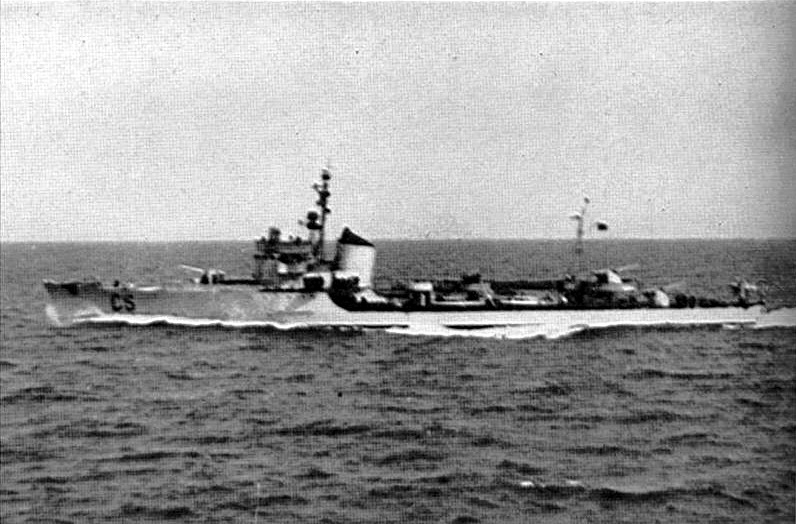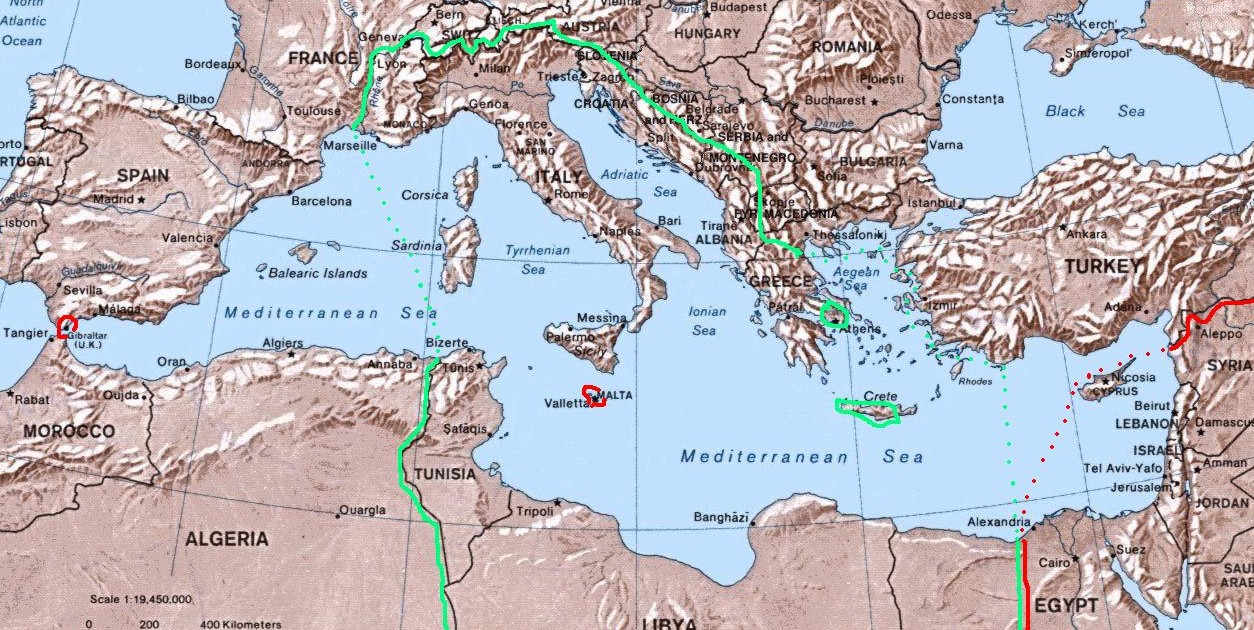|
Battle Of The Messina Convoy
The Battle of the Messina Convoy was a naval action fought on the night of 1/2 June 1943 off the Calabrian coast, near Cape Spartivento. The action was between the Allied destroyers and of the 14th Destroyer Flotilla and an Italian convoy of the merchant ships ''Vragnizza'' and ''Postumia'' escorted by the . The merchant ships managed to slip away but ''Castore'' sank a couple of hours after the engagement. On the fast return of the destroyers towards Malta, to get inside the range of Allied fighter cover, ''Vaasilissa Olga'' suffered a mechanical failure and was stopped for an hour while effecting repairs but the destroyers returned undamaged. The merchant ships, ''Castore'' and another torpedo boat (which was not present) were claimed sunk. Background Italian coastal traffic Despite the defeat in North Africa, Italian coastal and island traffic retained its importance, against which, the Royal Navy conducted offensive operations, assisted by signals intelligence derived from ... [...More Info...] [...Related Items...] OR: [Wikipedia] [Google] [Baidu] |
Battle Of The Mediterranean
The Battle of the Mediterranean was the name given to the naval campaign fought in the Mediterranean Sea during World War II, from 10 June 1940 to 2 May 1945. For the most part, the campaign was fought between the Kingdom of Italy, Italian Regia Marina, Royal Navy (''Regia Marina''), supported by other Axis Powers, Axis naval and air forces, those of Nazi Germany and Vichy France, and the United Kingdom, British Royal Navy, supported by other Allies of World War II, Allied naval forces, such as those of Australia, the Netherlands, Poland, and Kingdom of Greece, Greece. American naval and air units joined the Allied side on 8 November 1942. The Vichy French Scuttling of the French fleet at Toulon, scuttled the bulk of their fleet on 27 November 1942, to prevent the Germans seizing it. As part of the Armistice of Cassibile in September 1943, most of the Italian Navy became the Italian Co-belligerent Navy, and fought alongside the Allies. Each side had three overall objectives in ... [...More Info...] [...Related Items...] OR: [Wikipedia] [Google] [Baidu] |
Naval Battles Of World War II Involving Italy
A navy, naval force, military maritime fleet, war navy, or maritime force is the branch of a nation's armed forces principally designated for naval and amphibious warfare; namely, lake-borne, riverine, littoral, or ocean-borne combat operations and related functions. It includes anything conducted by surface ships, amphibious ships, submarines, and seaborne aviation, as well as ancillary support, communications, training, and other fields. The strategic offensive role of a navy is projection of force into areas beyond a country's shores (for example, to protect sea-lanes, deter or confront piracy, ferry troops, or attack other navies, ports, or shore installations). The strategic defensive purpose of a navy is to frustrate seaborne projection-of-force by enemies. The strategic task of a navy also may incorporate nuclear deterrence by use of submarine-launched ballistic missiles. Naval operations can be broadly divided between riverine and littoral applications ( brown- ... [...More Info...] [...Related Items...] OR: [Wikipedia] [Google] [Baidu] |
Mediterranean Convoys Of World War II
The Mediterranean Sea ( ) is a sea connected to the Atlantic Ocean, surrounded by the Mediterranean basin and almost completely enclosed by land: on the east by the Levant in West Asia, on the north by Anatolia in West Asia and Southern Europe, on the south by North Africa, and on the west almost by the Morocco–Spain border. The Mediterranean Sea covers an area of about , representing 0.7% of the global ocean surface, but its connection to the Atlantic via the Strait of Gibraltar—the narrow strait that connects the Atlantic Ocean to the Mediterranean Sea and separates the Iberian Peninsula in Europe from Morocco in Africa—is only wide. Geological evidence indicates that around 5.9 million years ago, the Mediterranean was cut off from the Atlantic and was partly or completely desiccated over a period of some 600,000 years during the Messinian salinity crisis before being refilled by the Zanclean flood about 5.3 million years ago. The sea was an important route for me ... [...More Info...] [...Related Items...] OR: [Wikipedia] [Google] [Baidu] |
Conflicts In 1943
Conflict may refer to: Social sciences * Conflict (process), the general pattern of groups dealing with disparate ideas * Conflict continuum from cooperation (low intensity), to contest, to higher intensity (violence and war) * Conflict of interest, involvement in multiple interests which could possibly corrupt the motivation or decision-making * Cultural conflict, a type of conflict that occurs when different cultural values and beliefs clash * Ethnic conflict, a conflict between two or more contending ethnic groups * Group conflict, conflict between groups * Intragroup conflict, conflict within groups * Organizational conflict, discord caused by opposition of needs, values, and interests between people working together * Role conflict, incompatible demands placed upon a person such that compliance with both would be difficult * Social conflict, the struggle for agency or power in something * Work–family conflict, incompatible demands between the work and family roles of ... [...More Info...] [...Related Items...] OR: [Wikipedia] [Google] [Baidu] |
June 1943 In Europe
June is the sixth and current month of the year in the Julian and Gregorian calendars—the latter the most widely used calendar in the world. Its length is 30 days. June succeeds May and precedes July. This month marks the start of summer in the Northern Hemisphere and contains the summer solstice, which is the day with the most daylight hours. In the Southern Hemisphere, June is the start of winter and contains the winter solstice, the day with the fewest hours of daylight out of the year. In places north of the Arctic Circle, the June solstice is when the midnight sun occurs, during which the Sun remains visible even at midnight. The Atlantic hurricane season—when tropical or subtropical cyclones are most likely to form in the north Atlantic Ocean—begins on 1 June and lasts until 30 November. Several monsoons and subsequent wet seasons also commence in the Northern Hemisphere during this month. Multiple meteor showers occur annually in June, including the Arietids, ... [...More Info...] [...Related Items...] OR: [Wikipedia] [Google] [Baidu] |
1943 In Italy
Events Below, the events of World War II have the "WWII" prefix. January * January 1 – WWII: The Soviet Union announces that 22 German divisions have been encircled at Stalingrad, with 175,000 killed and 137,650 captured. * January 4 – WWII: Greek-Polish athlete and saboteur Jerzy Iwanow-Szajnowicz is executed by the Germans at Kaisariani. * January 10 – WWII: Guadalcanal campaign, Guadalcanal Campaign: American forces of the 2nd Marine Division and the 25th Infantry Division (United States), 25th Infantry Division begin their assaults on the Battle of Mount Austen, the Galloping Horse, and the Sea Horse#Galloping Horse, Galloping Horse and Sea Horse on Guadalcanal. Meanwhile, the Japanese Seventeenth Army (Japan), 17th Army makes plans to abandon the island and after fierce resistance withdraws to the west coast of Guadalcanal. * January 11 ** The United States and United Kingdom revise previously unequal treaty relationships with the Republic of China (1912–194 ... [...More Info...] [...Related Items...] OR: [Wikipedia] [Google] [Baidu] |
Flag Of Italy (1861–1946)
The flag of Italy (, ), often referred to as The Tricolour (, ), is a flag featuring three equally sized vertical pales of green, white and red, with the green at the hoist side, as defined by Article 12 of the Constitution of the Italian Republic. Costituzione della Repubblica Italiana Art. 12, 22 dicembre 1947, pubblicata nella Gazzetta Ufficiale n. 298 del 27 dicembre 1947 edizione straordinaria (published in the Official Gazette f the Italian RepublicNo. 298 of 27 December 1947 extraordinary edition) "La bandiera della Repubblica è il tricolore italiano: verde, bianco, e rosso, a tre bande verticali di eguali dimensioni" The Italian law regulates its use and display, protecting its defense and providing for the crime of insulting it; it also prescribes its teaching in Italian schools together with other national symbols of Italy. The Italian Flag Day named Tricolour Day was established by law n. 671 of 31 December 1996, and is held every year on 7 January. This celebration ... [...More Info...] [...Related Items...] OR: [Wikipedia] [Google] [Baidu] |




